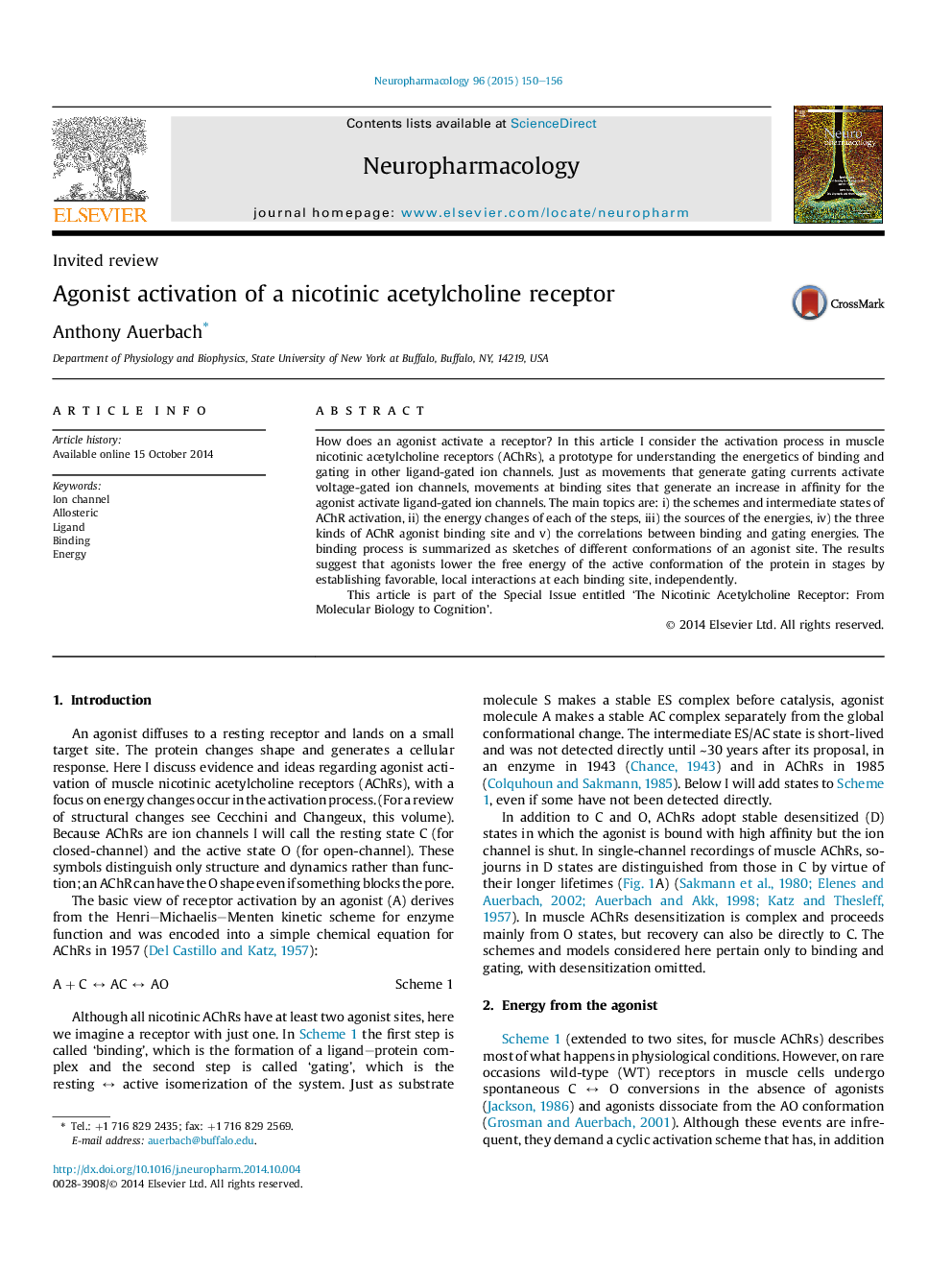| کد مقاله | کد نشریه | سال انتشار | مقاله انگلیسی | نسخه تمام متن |
|---|---|---|---|---|
| 2493151 | 1115474 | 2015 | 7 صفحه PDF | دانلود رایگان |
• Agonists turn or receptors because they have a higher affinity for the active state.
• The energy of the affinity change can be estimated by using electrophysiology.
• This energy has been measured in muscle AChRs for different ligands and mutations.
• The low ↔ high affinity switch requires conformational changes at the agonist sites.
• In AChRs, affinity and efficacy are correlated.
How does an agonist activate a receptor? In this article I consider the activation process in muscle nicotinic acetylcholine receptors (AChRs), a prototype for understanding the energetics of binding and gating in other ligand-gated ion channels. Just as movements that generate gating currents activate voltage-gated ion channels, movements at binding sites that generate an increase in affinity for the agonist activate ligand-gated ion channels. The main topics are: i) the schemes and intermediate states of AChR activation, ii) the energy changes of each of the steps, iii) the sources of the energies, iv) the three kinds of AChR agonist binding site and v) the correlations between binding and gating energies. The binding process is summarized as sketches of different conformations of an agonist site. The results suggest that agonists lower the free energy of the active conformation of the protein in stages by establishing favorable, local interactions at each binding site, independently.This article is part of the Special Issue entitled ‘The Nicotinic Acetylcholine Receptor: From Molecular Biology to Cognition’.
Journal: Neuropharmacology - Volume 96, Part B, September 2015, Pages 150–156
